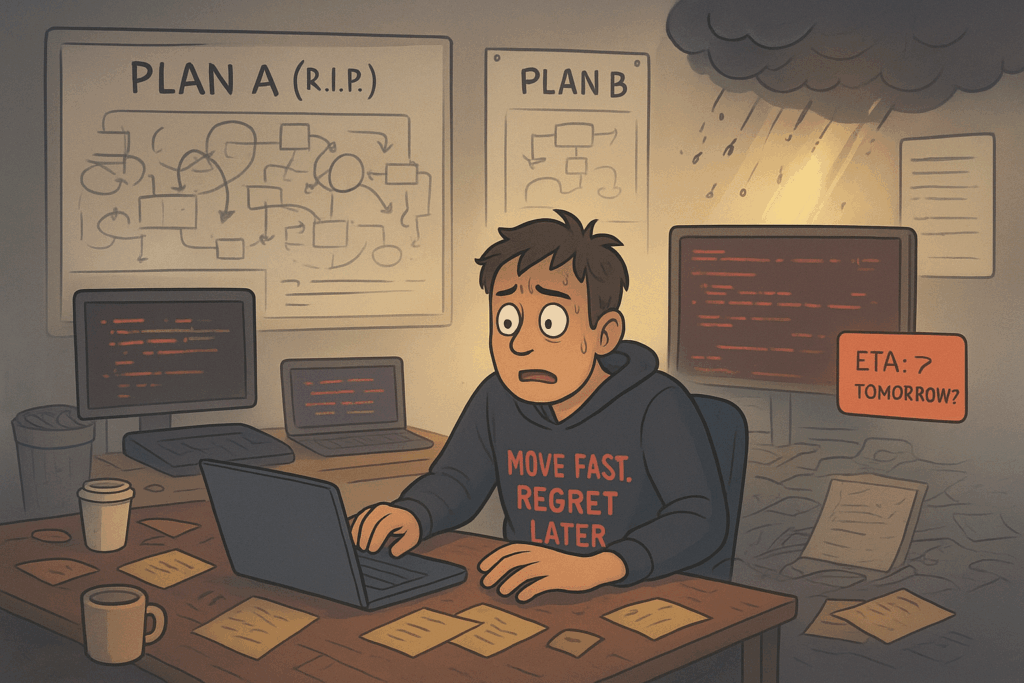Recently, one of our friends started a freelance project. A small system, some backend elements, e-commerce, and variety of external APIs. Simple stuff, right?
With plenty of time before the deadline, he thought:
“Perfect chance to try this cool new framework everyone’s talking about! Why not let an AI assistant help me code?”
In the beginning, the project was on track – the AI was cooperative, progress was visible, and the motivation was high. But as the ETA approached, reality also showed up… without knocking.
❌ Features weren’t working
❌ Some features were working… unpredictable
❌ Debugging something you don’t fully understand is a fast track to burnout
With time running out and bugs multiplying like rabbits, he made the tough call:
“Scrap it. Rebuild from scratch.”
This time, he approached it like an experienced and methodical developer.
✔️ Broke the work into clear, trackable steps
✔️ Carefully crafted a minimal working core before diving deep
✔️ Still used the AI, but only after running every line through a personal trust filter
The second time around, it was smooth, controlled, and much easier to understand. He even managed to finish before the ETA. Well… almost 😊
💡 The takeaway (in his words):
“Don’t count on AI to magically deliver your project on time. If you’re unfamiliar with a framework and want to learn it quickly, use AI to build as much of the project as you can within the first third of your allocated time. Once you’ve gained a solid understanding of the framework’s specifics, wrap up that phase and restart real development from the ground up.
Otherwise, you might end up with a massive black box – a partially working big ball of mud.”
